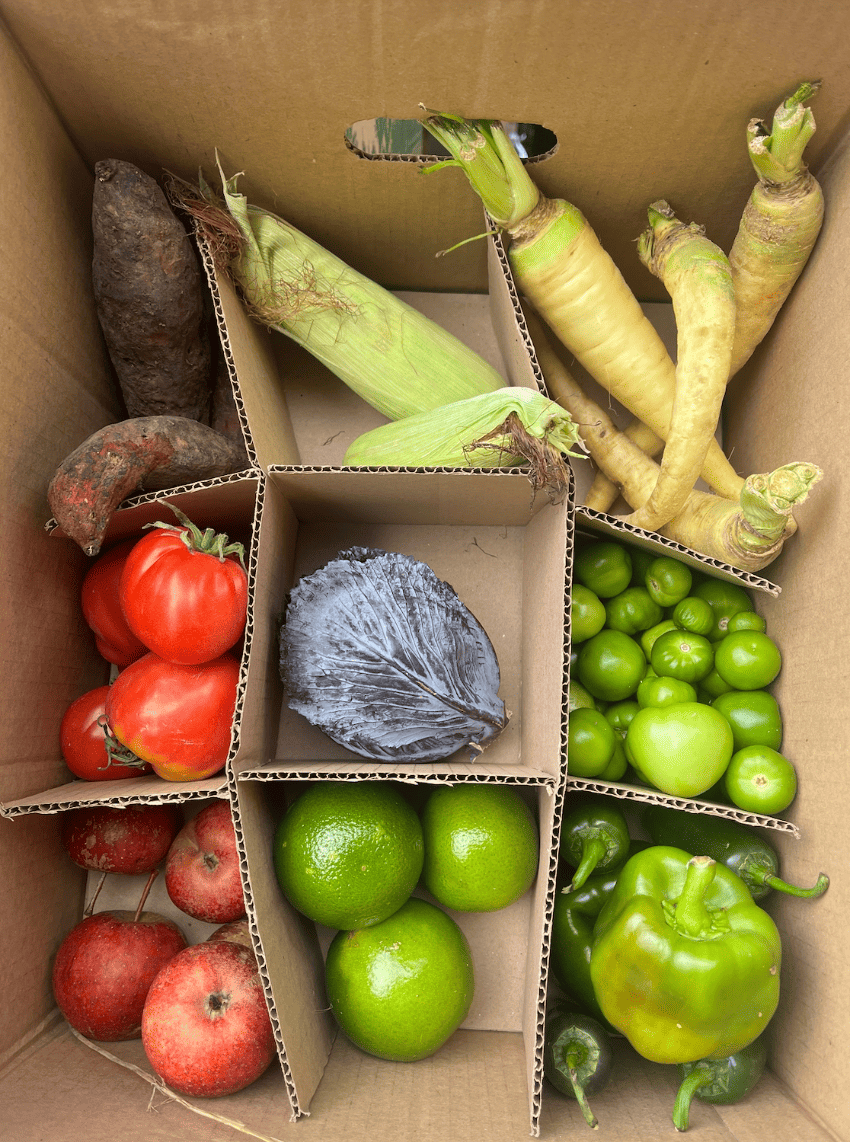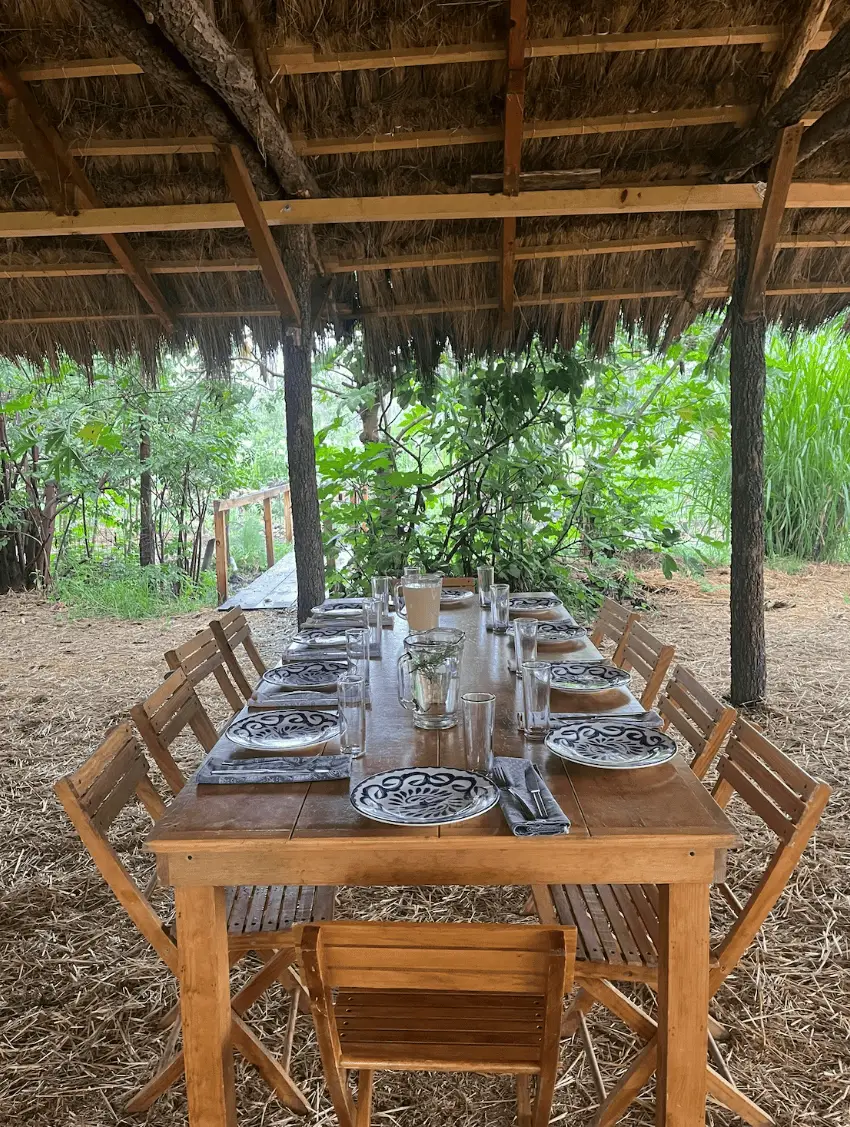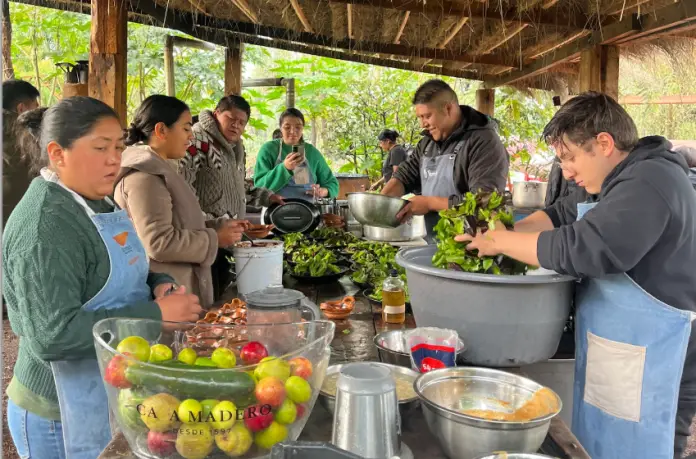Once upon a time in the southwestern region of the Valley of México, there was a land called Chinampan, where rectangular fields, up to 100 meters long and 25 meters wide, were created by man as a form of raised field agriculture. The fields were known as chinampas, and on those chinampas were chapines, or small squares of mud for seedlings to grow. That mud came from the depths of the canals created within the shallow lake upon which all of these chinampas seemed to be floating.
However, they weren’t really floating. The chinampa was kept in place by an interwoven system of ahuejote roots (willow) and reeds beneath its surface which served as both an anchor and a source of moisture. This constant absorption of water meant that a chinampa was effectively a sponge able to yield up to 5 harvests a year. A yield able to feed the 150,000 or more inhabitants of the Kingdom of Tenochtitlan, especially when you consider that today’s estimated 2,215 hectares of chinampas is a fraction of what it was in the 15th century.

Chinampan is now known as Xochimilco, the land of misty canals, endangered axolotl, and Saturday afternoon debauchery singing Vicente Fernández classics with your friends aboard a colorful trajinera (a gondola-like boat). Of the 2,215 hectares of land that remain, 1,000 hectares are abandoned and 300 hectares have been urbanized. A sizable portion of the 400 kilometers of canals remaining is polluted, and the fight to keep contractors from encroaching with apartment complex blueprints is daunting. Less than 3% of the existing farms are actually productive, even less are dedicated to organic farming.
Joy Hernández and her team at Arca Tierra are out to change all that. I met Joy at a “Sunrise in Xochimilco” tour in September and got to chat with her about their plans. The company is intent on saving the chinampa tradition through two avenues: rural tourism and regenerative agriculture.
“We have built a network of peasant farmers integrated by 50 families who dedicate their time to sowing as well as regenerating the soil (without the use of agro chemicals). We distribute all these agro ecological products through two channels. One is to restaurants and the other is through a subscription service or CSA,” she said. They sell only what’s in season to reduce their carbon footprint and provide produce that is rich in nutrients. The team also works to eliminate any surplus, which ensures fair prices and decent pay for the workers.
Tourism has also proved useful. Together with local farmers, chefs, and artisans, Arca Tierra hosts culinary experiences on the chinampas so “visitors can see how food is grown and taste some of the seasonal produce that grows”. This helps to show the public why preserving the sustainable farming practice is so critical not just to Mexico City, but to the world.

Why exactly are chinampas so important, anyway? For starters, they are one of the most (if not the most) sustainable forms of farming. Chinampas work with the environment instead of against it and, as a result, they:
- Provide a safe habitat for birds, fish, insects, and other mammals to thrive. In fact, 12 percent of the country’s biodiversity and two percent of the world’s biodiversity can be found in Xochimilco!
- Promote the growth of fungal species within its soils, naturally limiting the proliferation of harmful pathogens.
- Maintain Mexico City’s average temperature.
- Absorb vast amounts of carbon.
- Provide fresh produce in and around CDMX, including to the city’s top restaurants, notably Pujol, Máximo Bistro, Rosetta, and Contramar.
- Prove that human intervention has the power to enhance the environment rather than threaten it.

Many say the future of the chinampas looks bleak. The fight to preserve and protect Xochimilco and its peasant farming community has made it to the New York Times, BBC, National Geographic, NPR, and Smithsonian Magazine. Getting the information out there is the first step and, with conservation programs like MOJA and Adopt an Axolotl spreading the word, there’s a real chance at salvation.
Want to help but not sure how? If you live in Mexico City, consider signing up for Arca Tierra’s CSA program. A box of fresh, seasonal produce will be delivered to your door on a weekly or bimonthly basis. Or, support Xochimilco’s eco-tourism movement by participating in a tour of the chinampas with companies like Comunidad Routes n Roots.
Bethany Platanella is a travel planner and lifestyle writer based in Mexico City. She lives for the dopamine hit that comes directly after booking a plane ticket, exploring local markets, practicing yoga and munching on fresh tortillas. Sign up to receive her Sunday Love Letters to your inbox, peruse her blog, or follow her on Instagram.
